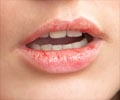- Cheilitis - (https://dermnetnz.org/topics/cheilitis/)
- Cheilitis Glandularis - (https://emedicine.medscape.com/article/1078725-overview)
- Overview of Cheilitis - (https://factdr.com/health-conditions/cheilitis/)
- The Clinical Features of Angular Cheilitis Occurring During Orthodontic Treatment: A Multi-Centre Observational Study - (https://www.ncbi.nlm.nih.gov/pubmed/20567030)
- What is Cheilitis? - (https://www.ncbi.nlm.nih.gov/books/nbk470592/)
What is Cheilitis?
Cheilitis is inflammation of the lips which includes the vermilion border (the junction of the lip and the skin) and the labial mucosa (the mucous membrane lining the inner aspect of the lips).(1Cheilitis Glandularis
Go to source)
What are the Types of Cheilitis?
There are several types of cheilitis, which include the following:
- Angular Cheilitis – Angular cheilitis affects the corners of the mouth. It is commonly caused by excess drooling of saliva as seen in children and elderly people and is characterized by fissures and cracks at the corners of the mouth, blistering, redness and bleeding.
- Granulomatous Cheilitis – Granulomatous cheilitis presents as swollen lips. It occurs due to an underlying disease condition like Crohn’s disease, sarcoidosis, allergy or rarely infection or cancer. This kind of cracked lips presents with other associated symptoms such as headache, fever, and mild lymph node enlargement.
- Actinic Cheilitis – Actinic cheilitis is characterized by dryness with thickening of the lower lip. It is caused by excess exposure to sunlight and often affects people living in tropical areas and those who work in the sunlight for longer durations. It could develop into cancer and therefore, the patient needs to be examined with a thorough medical examination and laboratory investigations.
- Exfoliative Cheilitis – Exfoliative cheilitis is a rare condition associated with continuous peeling of lips. It has been associated with poor oral hygiene, habits like constant picking or biting of the lips, and sometimes, HIV infection.
- Lichenoid Cheilitis – Lichenoid cheilitis occurs in patients with lichen planus, a connective tissue disorder. When lichen planus affects the lips, the skin around the lips turns whitish and the inner lining of the lips and oral cavity develop a plaque-like appearance.
- Cutaneous Lupus Erythematosus – Systemic lupus erythematosus is an autoimmune condition which affects the skin, joints and connective tissues. It causes a characteristic butterfly rash on the cheeks which spreads to the mouth resulting in scaling and plaques on the lips.
- Eczematous Cheilitis – Eczematous cheilitis is caused by contact allergens or irritants like lipsticks or other cosmetic products or due to an internal factor (atopic dermatitis). It is characterized by itching, cracking and peeling off of the skin of the lips.
- Cheilitis Glandularis - Cheilitis glandularis is characterized by progressive enlargement of the lower lip mucosa and the vermilion border. It is associated with severe environmental conditions like sun exposure, smoking and repeated lip biting. These affect the delicate labial mucosa of the lower lip leading to swelling and tenderness.(2✔ ✔Trusted Source
Cheilitis
Go to source)

What are the Causes of Cheilitis?
As noted above, there are various external and internal causes of cheilitis:
- External factors – which include allergic reaction to the drugs or cosmetics, or exposure to sun, dry heat or cold weather
- Internal Factors- which include autoimmune disorders, oral infection, vitamin deficiencies or age-related factors(3Overview of Cheilitis
Go to source)
What are the Symptoms of Cheilitis?
The main symptoms of cheilitis noted in the lips are:
Associated symptoms vary depending on the underlying cause and may include headache, fever and malaise.

How do you Diagnose Cheilitis?
- Detailed History – Your physician would take you through a number of questions which might include the history of the onset of the problem, and any underlying or associated complaints or symptoms. The history would include questions about denture history, oral care, other chronic skin conditions, medicine or drug history, habit of smoking, nutrition and diet, bowel movements, and acid reflux
- Physical Examination – A thorough examination by your physician will help narrow the diagnosis.
- Lab Investigations -Oral swabs and biopsies help to rule the underlying cause of the disease and confirm the diagnosis. Oral swabs, also known as culture swabs, are done to rule out infection from candida, staphylococcus bacteria or herpes simplex. A biopsy can help to diagnose a condition a lichen planus or a precancerous lesion.
How do you Treat Cheilitis?
Cheilitis is treated based on the underlying disease condition. Some treatments that are used to treat cheilitis include the following:
- Regular application of a lip balm. A lip balm containing a sunscreen should be preferred for actinic cheilitis
- Application of local antiseptic, antibiotic or antifungal cream or ointment depending on the underlying infection
- Application of local steroid or tacrolimus in certain cases
- Nutritional supplements to prevent and treat deficiencies(4✔ ✔Trusted Source
The Clinical Features of Angular Cheilitis Occurring During Orthodontic Treatment: A Multi-Centre Observational Study
Go to source)

How do you Prevent Cheilitis?
Cheilitis can be prevented by avoiding the factors that cause the condition, and treating any underlying disease associated with it. The following health tips will help to prevent cheilitis:
Health Tips
- Control the habit of lip biting or continuous picking of lips
- Visit your dentist to get your dentures readjusted, if necessary
- Avoid usage of allergic cosmetics like lipsticks and concealers or lip liners
- Avoid smoking
- Eat foods rich in vitamins especially vitamin A, vitamin B12 and zinc
- Foods rich in vitamin A include - pumpkin, eggs, sweet potatoes, carrots, mangoes, papaya
- Foods rich in vitamin B12 include - chicken, mutton, milk
- Foods rich in zinc are- milk, almonds, baked beans, chickpeas, yoghurt
- Maintain good oral hygiene and a healthy lifestyle
- Drink plenty of water.(5✔ ✔Trusted Source
What is Cheilitis?
Go to source)








